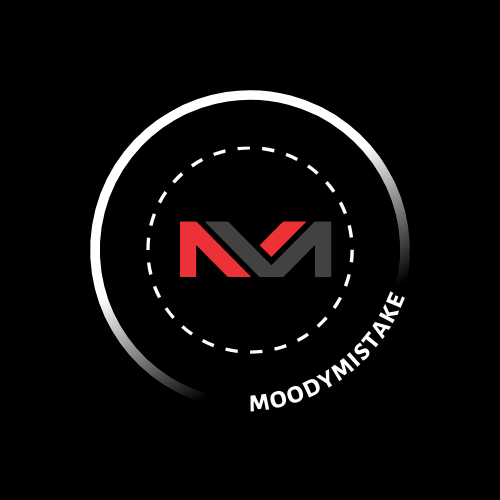Dealing with a reactive dog can be a challenging experience for any pet owner. Reactivity in dogs often manifests as excessive barking, lunging, or aggressive behavior in response to specific stimuli such as other dogs, people, or unfamiliar environments. Understanding the root causes of this behavior and implementing effective training strategies are crucial steps toward fostering a calmer, more confident canine companion. This comprehensive guide explores the nuances of reactive dog behavior, training methodologies, and resources available to assist you on this journey.
Understanding Canine Reactivity
Reactivity in dogs is characterized by heightened responses to certain triggers, leading to behaviors that can be challenging to manage. Common triggers include other animals, strangers, loud noises, or unfamiliar situations. Recognizing the signs of reactivity is the first step in addressing the issue. These signs may encompass:
- Excessive Barking or Growling: Vocalizations directed at specific stimuli.
- Lunging or Jumping: Attempts to approach or distance from the trigger.
- Ears Pinned Back: Indicates fear or discomfort.
- Tail Tucking or Raised Hackles: Signs of anxiety or arousal.
Understanding these behaviors is essential for implementing effective training strategies.
Effective Training Strategies for Reactive Dogs
Addressing reactivity involves a combination of management techniques and behavior modification strategies. Key approaches include:
1. Desensitization and Counter-Conditioning
This method involves gradually exposing your dog to the trigger at a comfortable distance and pairing the experience with positive reinforcement, such as treats or praise. Over time, this helps change the dog’s emotional response to the trigger. For instance, rewarding your dog as soon as the trigger appears can help them associate the presence of the trigger with positive outcomes.
2. Engage/Disengage Technique
This technique teaches your dog to notice a trigger and then voluntarily look away from it, focusing back on you. Start by marking and rewarding your dog for looking at the trigger without reacting. Gradually, your dog learns to disengage from the trigger and seek your attention instead. This approach fosters impulse control and reduces reactive behaviors.
3. Look at That (LAT) Training
Similar to the Engage/Disengage technique, LAT encourages your dog to look at a trigger and then back at you for a reward. Begin at a distance where your dog notices the trigger but remains calm. Mark the moment your dog looks at the trigger and reward them for looking back at you. Gradually decrease the distance to the trigger as your dog’s comfort increases.
4. Management Techniques
Implementing management strategies can prevent reactive episodes and set your dog up for success:
- Avoid Triggers: When possible, steer clear of situations that provoke reactivity.
- Create Visual Barriers: Use fences, curtains, or parked cars to block your dog’s view of triggers.
- Use Appropriate Equipment: Tools like head halters or front-clip harnesses can provide better control during walks.
- Establish Predictable Routines: Consistent schedules can reduce anxiety and help your dog feel more secure.
Professional Training Resources
Seeking professional assistance can provide tailored strategies and support. Here are some resources to consider:
Reactive Rovers Classes
Designed for dogs that struggle with on-leash reactivity, these classes offer structured training to help dogs feel more comfortable during walks. They typically include an introductory webinar and multiple course levels to address varying degrees of reactivity.
Leash Reactive Dog Course
This online course provides a step-by-step guide to reducing leash reactivity, focusing on foundational skills, defensive handling maneuvers, and desensitization techniques.
Management for Reactive Dogs
Offered by Fenzi Dog Sports Academy, this class teaches strategies for managing and controlling dogs reactive to people or other dogs, addressing behaviors stemming from fear or excitement.
Tips for Working with a Reactive Dog
Implementing the following tips can aid in managing and reducing reactivity:
- Remain Calm: Your dog can pick up on your emotions. Staying calm can help prevent escalating the situation.
- Use High-Value Treats: Rewarding your dog with their favorite treats can reinforce positive behaviors.
- Practice at a Safe Distance: Begin training far enough from the trigger to prevent reactions, gradually decreasing the distance as your dog improves.
- Be Patient and Consistent: Behavior modification takes time. Consistency is key to success.
- Seek Support: Joining support groups or forums can provide encouragement and share effective strategies.
Finding Reactive Dog Training Near You
Locating a qualified trainer experienced in handling reactive dogs is crucial. Consider the following steps:
- Research Local Trainers: Look for trainers specializing in behavior modification for reactive dogs.
- Check Certifications: Ensure the trainer has relevant certifications and uses positive reinforcement methods.
- Read Reviews: Testimonials from other dog owners can provide insight into the trainer’s effectiveness.
- Attend a Class: Observing a session can help you determine if the trainer’s approach aligns with your needs.
Remember, addressing reactivity in dogs requires time, patience, and the right approach. Finding a local trainer who specializes in reactive dog training can significantly improve your dog’s behavior and your overall experience as a pet owner.
How to Choose the Best Reactive Dog Trainer Near You
When looking for a trainer, consider the following factors to ensure the best fit for your dog’s needs:
1. Experience with Reactive Dogs
Not all trainers have experience handling reactivity. Look for trainers who specialize in behavioral modification and have worked with reactive dogs before.
2. Positive Reinforcement Techniques
Avoid trainers who use punishment-based training. Positive reinforcement techniques (rewarding good behavior) are more effective in reducing reactivity.
3. Certifications & Credentials
Choose a trainer with certifications from reputable organizations such as:
- Certified Professional Dog Trainer (CPDT-KA)
- International Association of Animal Behavior Consultants (IAABC)
- Karen Pryor Academy Certified Training Partner (KPA CTP)
4. Small Class Sizes or Private Sessions
Reactive dogs benefit from smaller training groups or one-on-one sessions, reducing stress and distractions.
5. Client Reviews & Testimonials
Look at Google Reviews, Yelp, or Facebook for feedback from other pet owners who have trained their reactive dogs with the trainer.
6. Observation Opportunities
Some trainers allow you to observe a class before signing up. This helps you gauge their training methods and environment.
Where to Find Reactive Dog Training Near You
If you’re searching for reactive dog training in your area, try these methods:
1. Google Search
A simple search like “reactive dog training near me” can provide a list of local trainers, along with ratings and reviews.
2. Veterinary Recommendations
Your vet can recommend trainers with proven success in handling reactive dogs.
3. Online Directories
Websites like:
- The Association of Professional Dog Trainers (APDT) – www.apdt.com
- The International Association of Canine Professionals (IACP) – www.canineprofessionals.com
4. Social Media Groups & Forums
Join local Facebook groups or forums dedicated to dog training. Fellow pet owners often share recommendations based on personal experiences.
5. Pet Stores & Dog Daycares
Pet stores like Petco and PetSmart offer training classes. Some independent pet stores or dog daycares also have professional trainers available.
Costs of Reactive Dog Training
The cost of training can vary based on location, trainer experience, and the type of training provided. Here’s a general breakdown:
- Group Classes: $100 – $300 (4-6 weeks)
- Private Sessions: $50 – $150 per hour
- Board-and-Train Programs: $1,000 – $3,000 for intensive multi-week programs
- Online Courses: $50 – $200 for pre-recorded training modules
Investing in professional training can save time and frustration, helping your dog build confidence and calmness.
DIY Reactive Dog Training Tips
If professional training isn’t accessible, you can work on reactivity at home with these self-training strategies:
1. Create a Safe Training Environment
- Choose a quiet location with minimal distractions.
- Use a leash and harness to maintain control.
- Keep training sessions short (5-10 minutes) to prevent stress.
2. Introduce Triggers Gradually
- Start at a distance where your dog notices but doesn’t react.
- Reward calm behavior with high-value treats.
- Gradually decrease the distance over multiple sessions.
3. Use Redirection Techniques
- Teach your dog alternative behaviors like “sit,” “watch me,” or “touch.”
- If your dog starts reacting, redirect their focus before they escalate.
4. Practice Loose-Leash Walking
- Walk in low-traffic areas first.
- Reward your dog for maintaining eye contact with you.
- Gradually introduce busier environments as your dog gains confidence.
5. Stay Consistent & Patient
- Behavior change takes weeks to months.
- Keep training sessions positive and consistent.
- If progress stalls, consult a professional.
Final Thoughts: Helping Your Reactive Dog Thrive
Training a reactive dog is a journey that requires dedication, patience, and the right strategies. Whether you opt for professional training or work on it yourself, the key is consistency and positive reinforcement.
By understanding your dog’s triggers, using behavior modification techniques, and finding the right resources, you can help your furry friend become calmer and more confident.




